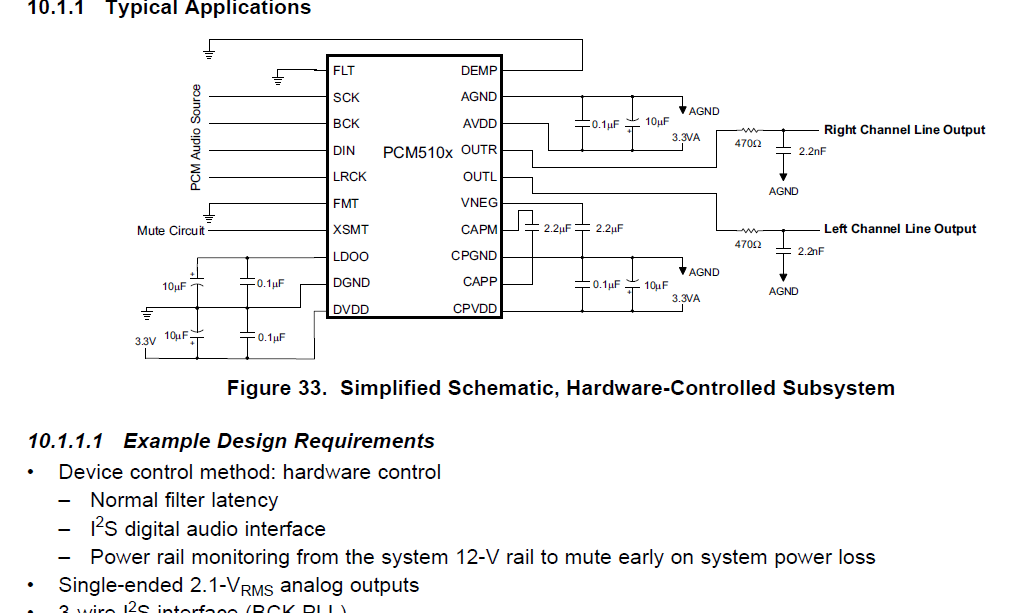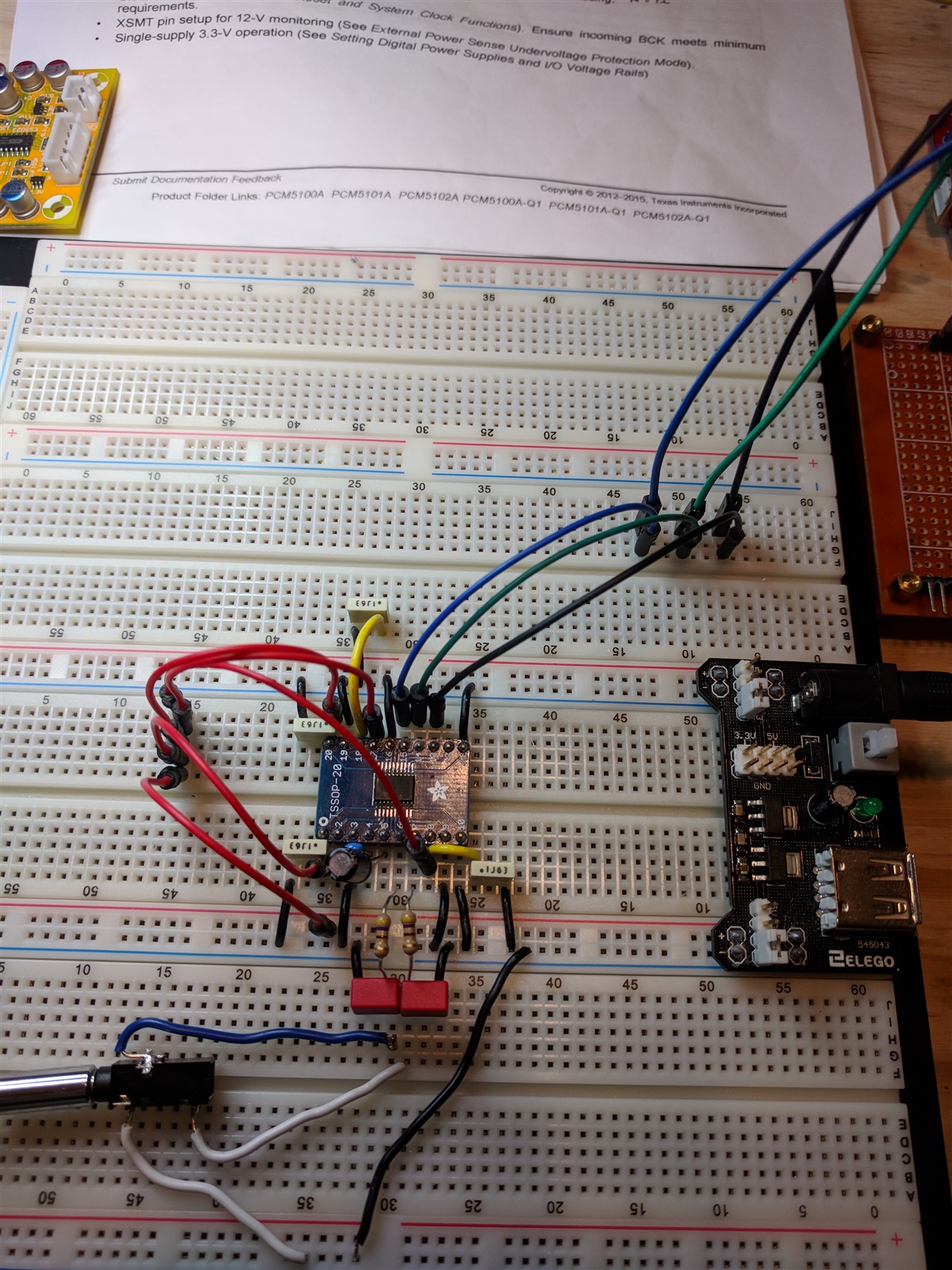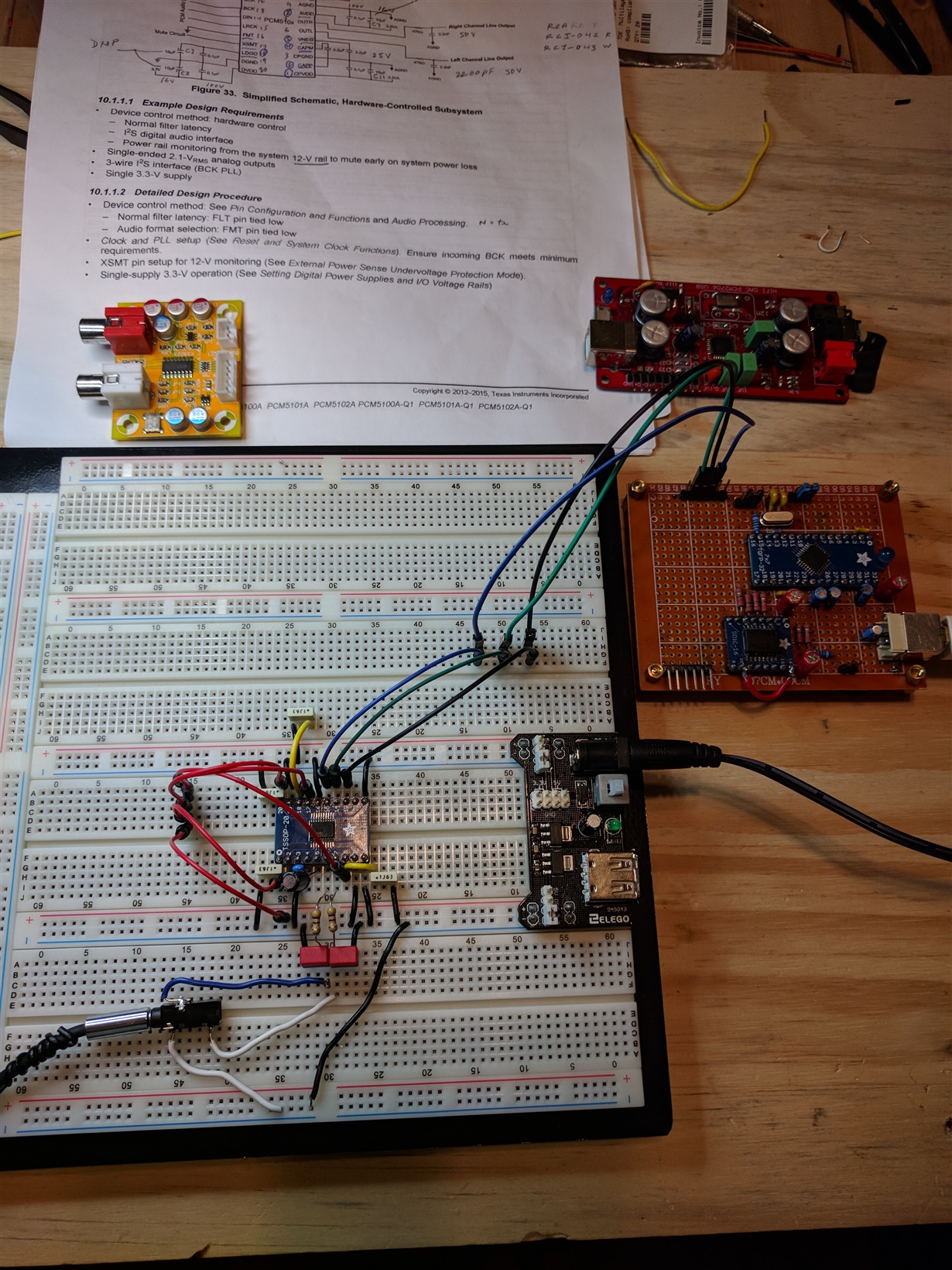Other Parts Discussed in Thread: PCM2706C, PCM5102, PCM2706, ISO7240C, LP2992
Hello,
Having issue with your Application and Implementation on page 26 of the datasheet with part number PCM5102APWR.
Here is the flow:
[ PCM2706CPJTR] > i2s > [PCM5102APWR] > {AMP OUT}
THAT is PCM2706C USB to PCM5102A DAC to Amplifier Speaker.
I have it setup for PCM5102a PLL Operation 3.3v on a breadboard, clean 3.3v power supply.
Also the XSMT PIN 17 wired to AVDD PIN 8 on the 'Breadboard', per the TI datasheet recommendations. THIS IS THE ONLY DEVIATION.
I have swap out the PCM5102A DAC with another DAC,the ES9023, and the setup works fine!
HOWEVER the TI PCM5102A IC is module not working. I have replace the IC Module with another PCM5102A chip, but same result.
QUESTION:
1. Where do I wire XSMT PIN 17, to AVDD and or DVDD!
2. What is the I2S hardware configuration for optimal high-resolution performance!
3. What is the best TI I2S hardware configuration recommended!
Note I have review the wiring to your Application and Implementation on page 26 of the datasheet to my breadboard wiring using the same BOM and wiring. Not getting any signal output!
I have replace the IC since we have several PCM5102 IC module made up for bread-boarding.
Regards





